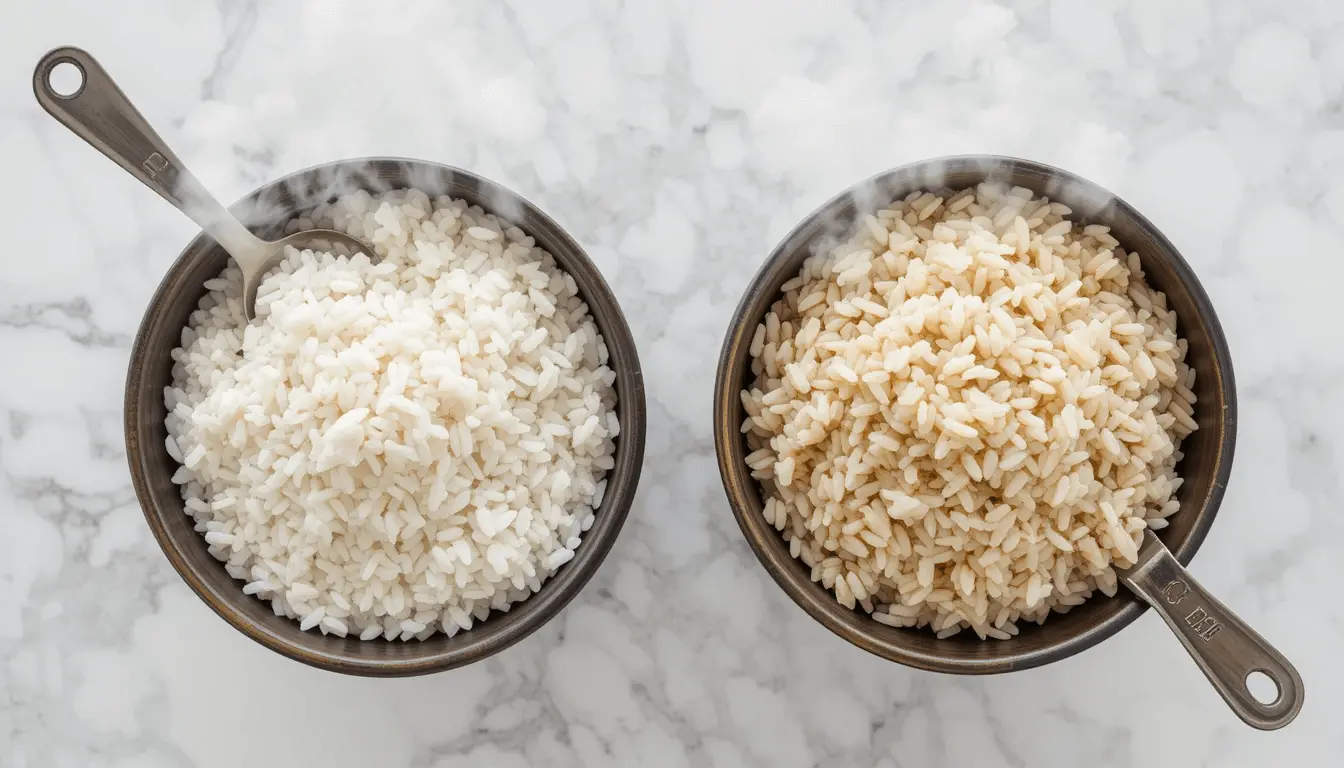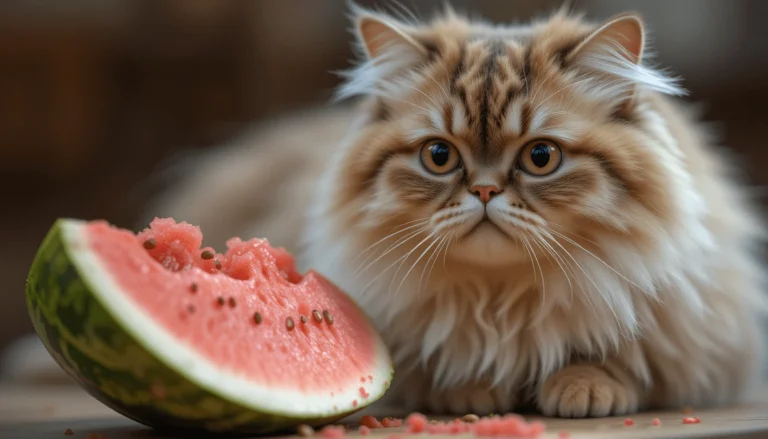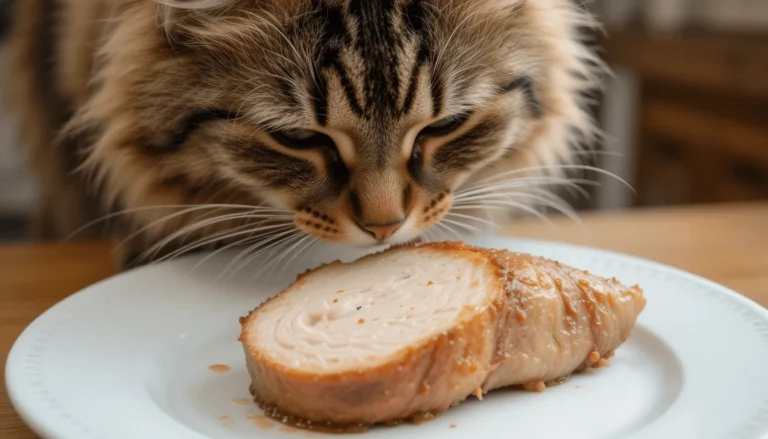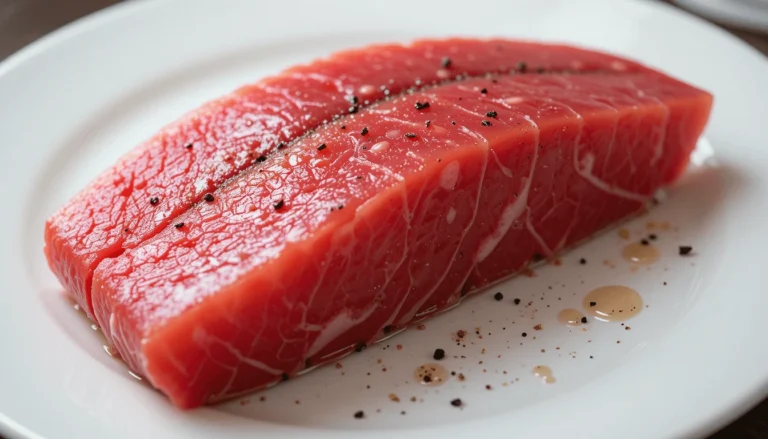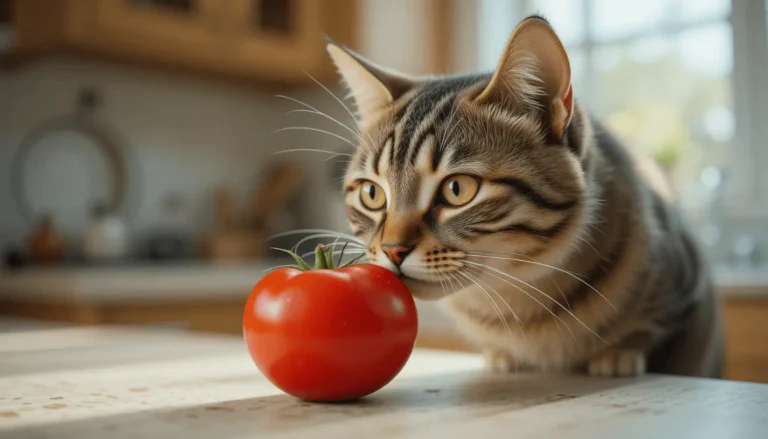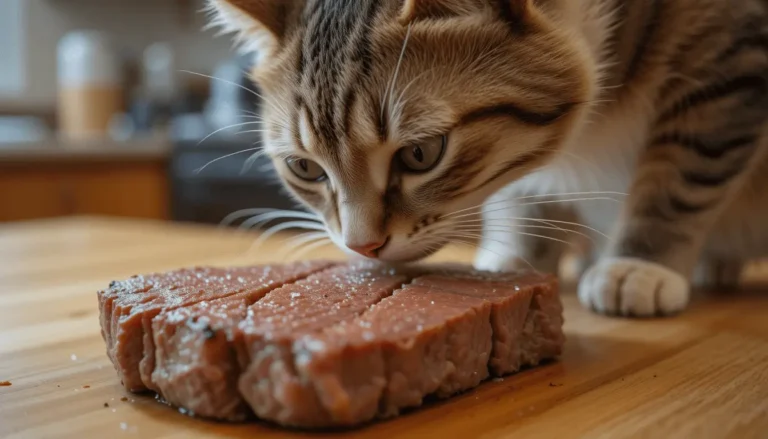Can Cats Eat Cooked Rice ? A Complete Guide for Pet Owners
Introduction
The curious case of Mittens and the rice bowl…
You’re sitting at the dinner table when a soft plop interrupts your meal—your cat, Mittens, has just dunked her paw into your bowl of steamed rice. As she licks the grains off her fur, you freeze: Can cats eat cooked rice ? Is this harmless curiosity, or a hidden danger?
For centuries, cats have stolen food from human plates (with varying success). But rice—a staple in our diets—isn’t something they’d hunt in the wild. So why do some cats crave it? And when does this innocent snack become a risk?
In this guide, we’ll unravel the truth with vet-backed insights. You’ll learn:
- When rice can help (like soothing an upset stomach)
- When it might harm (hello, carb overload!)
- How to serve it safely—if you choose to at all.
By the end, you’ll know exactly what to do the next time Mittens eyes your sushi roll. Let’s settle the debate once and for all.
Is Cooked Rice Safe for Cats?
First, the good news: Yes, cats can eat cooked rice in moderation. According to the ASPCA, plain, fully cooked rice is non-toxic for cats and may even help with digestive issues like occasional diarrhea. In fact, many veterinarians recommend mixing a small amount of white rice with boiled chicken for cats recovering from stomach upset.
However, rice isn’t a natural part of a cat’s diet. Here’s what every cat lover should consider:
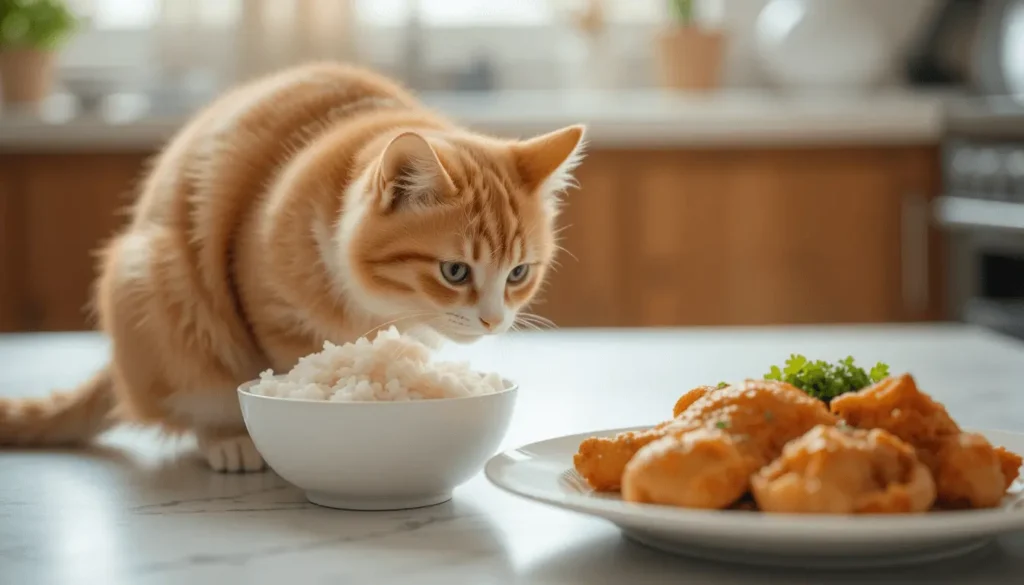
Nutritional Benefits (When Used Wisely)
Felines have an obligatory carnivorous nature, biologically requiring animal-based proteins as their primary nutritional source rather than plant-derived carbohydrates. But in small amounts, rice can provide easily digestible carbohydrates. A study published in the Journal of Animal Physiology and Animal Nutrition found that some commercial cat foods include rice as a filler ingredient, though it should never replace high-quality protein.
Potential Risks (What Cat Owners Must Watch For)
While rice isn’t toxic, overfeeding can lead to problems. Cats lack the enzymes to efficiently break down large amounts of carbohydrates. Research from the Cornell Feline Health Center suggests that excessive carbs may contribute to obesity and diabetes in cats—two conditions on the rise in indoor felines.
Veterinary Guidelines for Safe Feeding
If you do offer rice, follow these vet-approved rules:
- Keep portions tiny—no more than a teaspoon for an average-sized cat.
- Always cook it plain—no butter, salt, or seasonings, which can harm cats.
- Monitor for allergies—though rare, some cats may show signs of grain intolerance, like itching or vomiting.
The Bottom Line for Cat Lovers
So, can cats eat cooked rice? Yes—but it should be an occasional treat, not a dietary staple. For cats with health conditions like diabetes or obesity, skip the rice altogether and stick to high-protein meals.
How to Safely Serve Cooked Rice to Your Cat
Every cat owner wants to get feeding right. While rice isn’t toxic, proper preparation makes all the difference between a safe treat and potential problems.
Choosing the Right Rice for Your Feline Friend
White rice tends to be gentler on feline stomachs compared to brown rice. The simpler starch structure makes it more digestible, especially for cats with sensitive systems. Brown rice offers more fiber but may be harder for some cats to process. According to veterinary nutritionists at Tufts University, refined grains like white rice are preferable when using rice as a temporary digestive aid.
Perfect Preparation Methods
Always cook rice thoroughly until it’s soft and mushy – al dente isn’t suitable for feline digestion. Use only water during cooking, avoiding any salt, butter, garlic, or seasonings that could harm your cat. Cool it to room temperature before serving, as hot food can burn delicate mouths. A good rule of thumb? Prepare the rice as you would for a human toddler – plain, soft, and unseasoned.
Smart Serving Suggestions
For first-time introductions, mix just a few grains into your cat’s regular food. Observe for any changes in appetite, energy levels, or litter box habits over the next 24 hours. The American Association of Feline Practitioners recommends limiting rice to no more than 10% of your cat’s total daily calories. That translates to about 1-2 teaspoons for an average adult cat, served no more than twice weekly.
When Rice Might Help (And When to Avoid It)
Understanding specific situations where rice could benefit – or harm – your cat helps you make informed decisions about their diet.
Therapeutic Uses for Rice
Some veterinarians suggest a bland diet of boiled chicken and white rice for 24-48 hours when managing mild digestive upset. The easily digestible carbohydrates can help bind stools during episodes of diarrhea. However, this should only be done under veterinary guidance, as prolonged rice feeding can lead to nutritional imbalances.
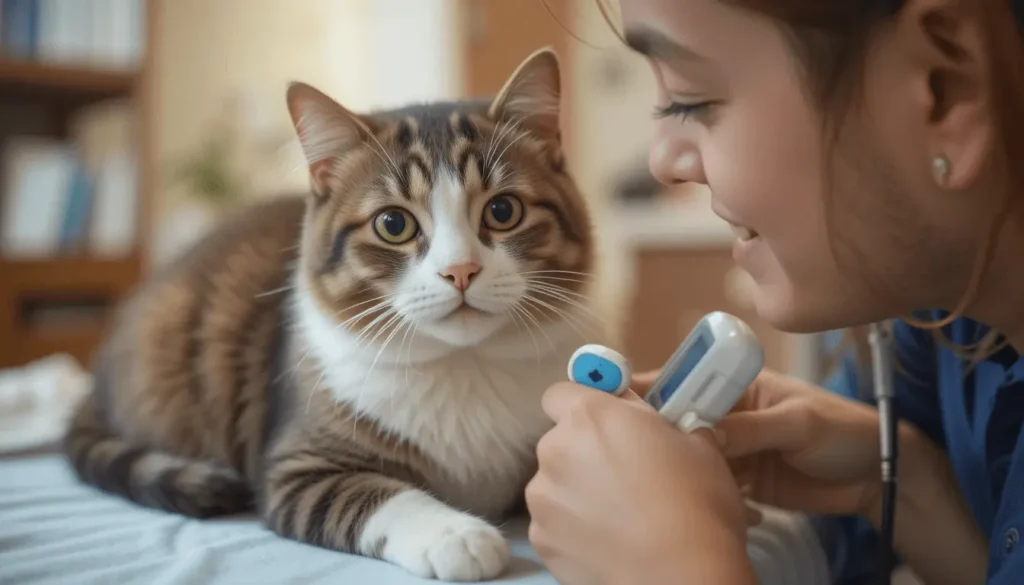
Risk Factors to Consider
Cats with diabetes or weight issues should generally avoid rice due to its carbohydrate content. The rapid glucose absorption from high-glycemic foods may compromise glycemic regulation in cats with diabetes mellitus. Overweight cats benefit more from high-protein, low-carb diets that mimic their natural nutritional needs.
Recognizing Negative Reactions
Although rare, certain felines might exhibit adverse reactions to rice consumption. Warning signs include vomiting within hours of eating, changes in litter box habits, excessive scratching, or lethargy. If you notice these symptoms, discontinue rice immediately and consult your veterinarian.
Nutritious Alternatives to Rice for Cats
For cat owners seeking variety or dealing with rice sensitivities, several alternatives provide similar benefits without the grain content.
Digestive-Friendly Options
Plain canned pumpkin (not pie filling) offers excellent fiber for digestive regulation. The soluble fiber in pumpkin helps regulate intestinal motility, making it effective for managing both loose stools and fecal retention in felines. Cooked sweet potato (without skin or seasoning) serves as another easily digestible carbohydrate source.

Protein-Packed Substitutes
For cats needing extra calories, consider plain cooked chicken, turkey, or scrambled eggs. These provide high-quality protein that aligns with feline nutritional needs. Fish like salmon or tuna (in moderation) can also be appealing, though they shouldn’t become dietary staples due to potential mercury exposure.
Commercial Alternatives Worth Trying
Several reputable pet food brands offer grain-free formulas featuring alternative carbohydrate sources like peas or potatoes. These can be good options for cats needing limited ingredient diets. Always transition foods gradually over 7-10 days to avoid digestive upset.
Conclusion: Making the Best Choice for Your Feline Friend
So, can cats eat cooked rice? The answer is yes—in moderation and when prepared properly. While it’s not toxic, rice should never replace high-quality protein in your cat’s diet. Whether you’re using it as a temporary digestive aid or an occasional treat, always prioritize your cat’s unique nutritional needs.
Remember:
- Plain, cooked rice is safest—skip the seasonings and butter.
- Portion control matters—a teaspoon or two is plenty.
- Watch for reactions—some cats may not tolerate grains well.
For cat owners seeking alternatives, lean proteins like chicken or digestible options like pumpkin often make better choices. When in doubt, your veterinarian can provide personalized advice tailored to your cat’s health.
Final Thought: While sharing food with our cats can feel like an act of love, their well-being always comes first. So next time your cat eyes your rice bowl, ask yourself: Is this truly what’s best for them?
Helpful Resources:
- Safe Or Not ? Cat Food Guide
- ASPCA – Human Foods for Cats
- Cornell Feline Health Center – Feline Nutrition
- VCA Hospitals – Safe Human Foods for Cats
FAQs
1. How much cooked rice can I safely give my cat?
A teaspoon or two of plain, cooked rice once or twice a week is the safe maximum for an average-sized adult cat. Remember:
- Rice should never exceed 10% of your cat’s daily calories
- Kittens should avoid rice entirely as they need protein-rich diets for growth
- Overweight or diabetic cats should skip rice due to its carbohydrate content
2. My cat ate seasoned rice – what should I do?
If your cat accidentally consumed rice with:
- Garlic/onion: Contact your vet immediately as these are toxic
- Butter/oil: Monitor for vomiting or diarrhea – may cause temporary upset
- Salt/spices: Offer fresh water and watch for excessive thirst
For small amounts (a few grains), most cats will be fine, but call your vet if you notice lethargy, vomiting, or other concerning symptoms.
3. Is rice good for cats with diarrhea?
Vets sometimes recommend a 24-48 hour bland diet of:
- 75% boiled white meat chicken
- 25% plain white rice
However: - This is only a short-term solution
- Chronic diarrhea requires veterinary attention
- Some cats do better with pumpkin instead of rice
4. Can rice cause allergies in cats?
While uncommon, some signs of grain sensitivity include:
- Excessive scratching or skin irritation
- Chronic ear infections
- Frequent vomiting
If you suspect an allergy, your vet can perform elimination diet trials to identify the culprit.
5. Are there better alternatives to rice for cats?
Consider these more species-appropriate options:
- For digestion: Plain canned pumpkin (1/2 tsp)
- For calories: Cooked chicken or turkey
- For variety: Commercial grain-free cat foods
6. Why does my cat beg for rice if they’re carnivores?
Cats may be attracted to:
- The texture and temperature of warm rice
- The association with your mealtime
- Simple curiosity about human food

